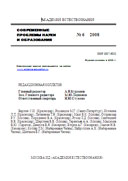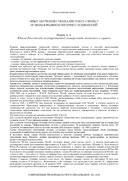PDF-версия статьи


|
Communication technology is aimed at solving the problem of transmitting and accurately receiving signals through noise channels. The communication method is not only simple two-point voice communication, but also multi-user communication, multi-channel and multimedia applications. Examples of communication technology platforms include mobile communication systems, wireless local area networks and wireless personal computer networks.
There are various advantages for the development of communication technologies: on the one hand, wireless services improve the quality of life, increase productivity and efficiency, benefit the public and users. On the other hand, local industry can also increase its competitiveness by improving its technological base. Industry thrives to create jobs and services that are market-oriented, application systems or parts.
Due to the rapid development of wireless broadband networks and mobile communication technologies, various mobile devices are widely used. Diversified transportation services and applications allow users to get used to handling life, size and other aspects of life using mobile devices. However, existing data and control signals must be transmitted through the core network. Because of the network congestion problem, the use of direct communication technology, which does not require access through the base station, has gradually attracted attention of the D2D.
However, compatibility between different devices and systems and differences in the communication interface are problems that the direct communication model will face. The development of integrated communication platforms that support various communication modes, cross-carriers and inter-systems will be devices. The main problems for the development of technology Device-to-Device Communications (D2D).
To this end, this article will present the concept of work, the technical architecture and the development of applications for the DOMD platform for contactless communication, which encompasses devices, cross-systems and interconnection technologies.
An element performing a D2D communication behavior typically consists of at least two or more neighboring terminal devices and launches the same application service, such as social interaction, collaborative play, multiple fire control, Push-to-Talk, and so on.
When a user performs an application service with a D2D contactless communication, the most basic communication operations can be simply divided into a caller and a called subscriber. The caller and the called can represent different mobile devices and perform various operations.
Regardless of whether it is a two-way call request, answering a call or a one-way signal, it can be called a message. These messages will be transmitted between the calling and called ends via the virtual channel. This virtual channel is similar to the bus concept and is responsible for sending messages. Receive and identify various sources and processes, and send messages to the correct recipient.
The called party can have several objects that represent different functions. If the caller wants to make a call to the object on the called end, the proxy object that represents the object can be set as the calling application. The program can use this proxy object to query the called party. After the called subscriber receiving a call request performs the related operations, he can return a Method Reply result. The called party can also send a signal to the caller according to various conditions. After receiving the call, the caller performs the appropriate processing in accordance with the various signals.
References
1. Andresen, Bent. B. Multimedia in Education: a specialized textbook. course: / Bent.
B. Andersen, Katya Van Den Brink. - 2 nd ed. ; Correction. and additional. - Moscow: Drofa, 2007. - 221 p.
2. Averyanov, L. Ya. Modern Problems of Internet Learning / L. Ya. Averyanov, Dr.
Sc. Sciences, prof., A. V. Runov, Cand. sociol. Sciences, Assoc. // Informatics and education. - 2003. - No. 5. - P. 70 - 75.
ОПУБЛИКОВАНО
Almenova F.B., I.K.Baynazarova., Iztaev Zh.D., S.S.Mombekova, G.S.Shaymerdenova DEVELOPMENT OF COMMUNICATION TECHNOLOGIES D2D. // Современные проблемы науки и образования - 2018.-№6. (приложение "Технические науки"). - C. 4